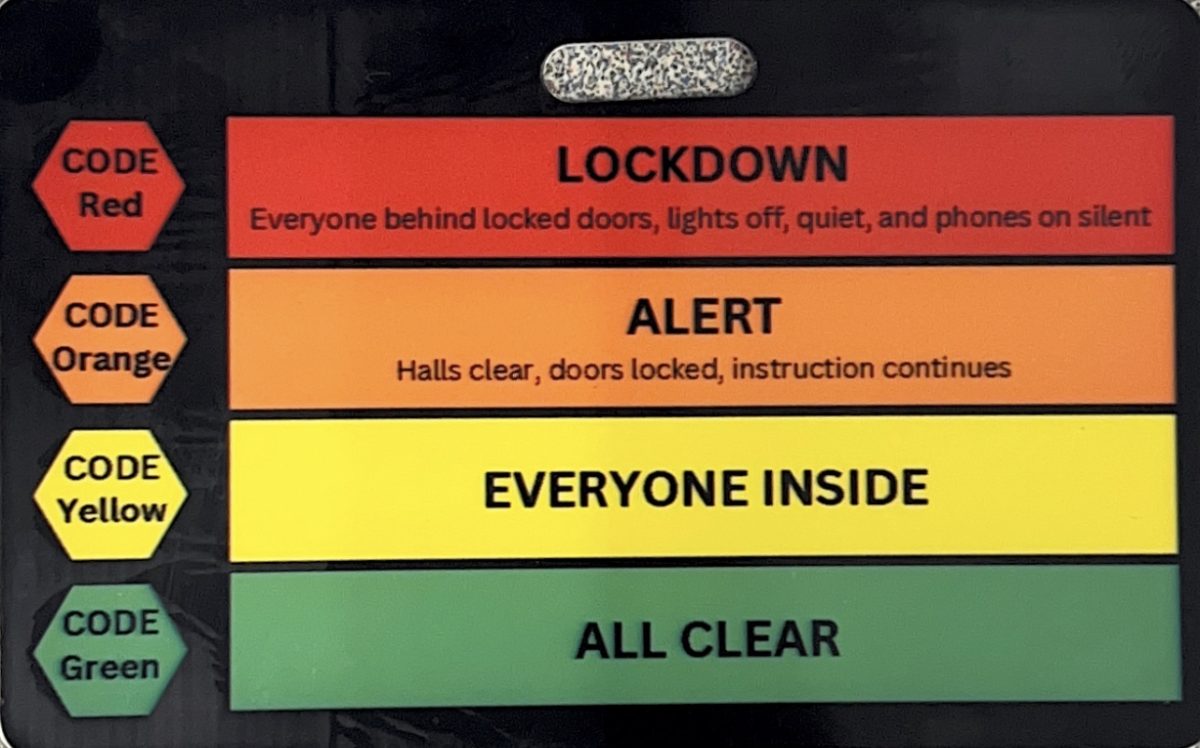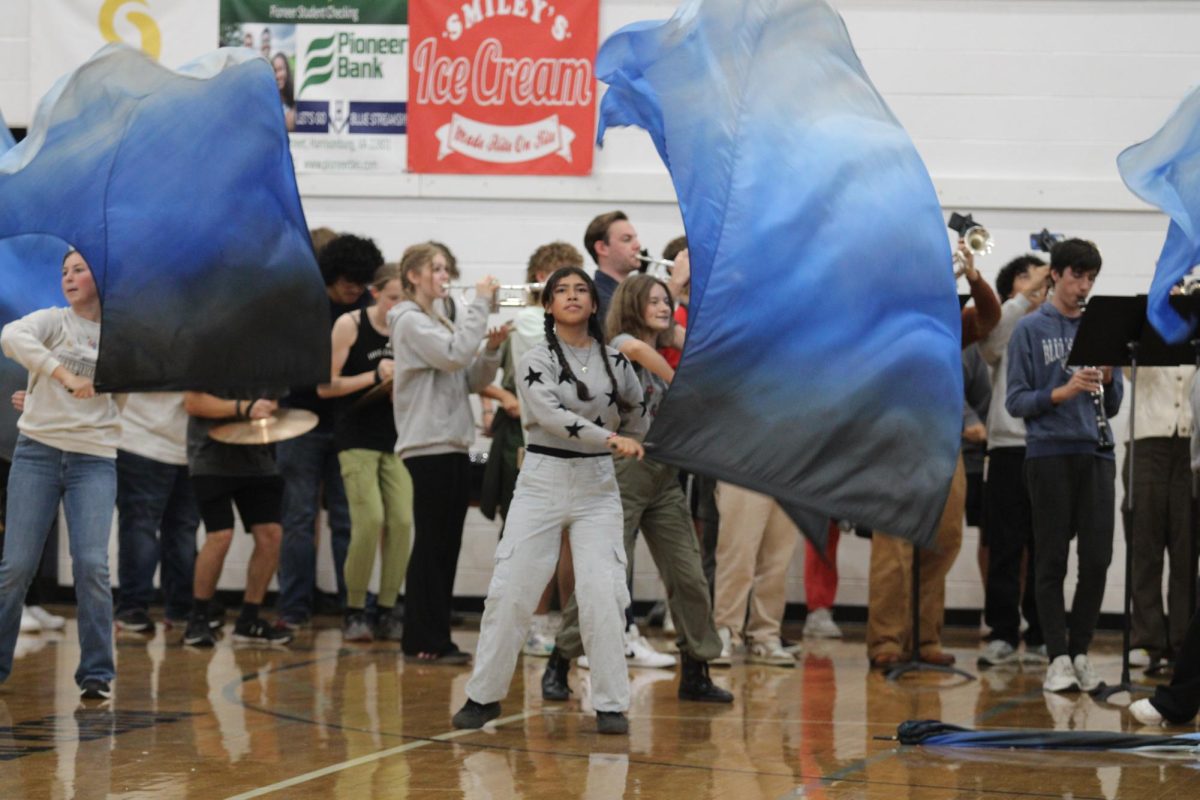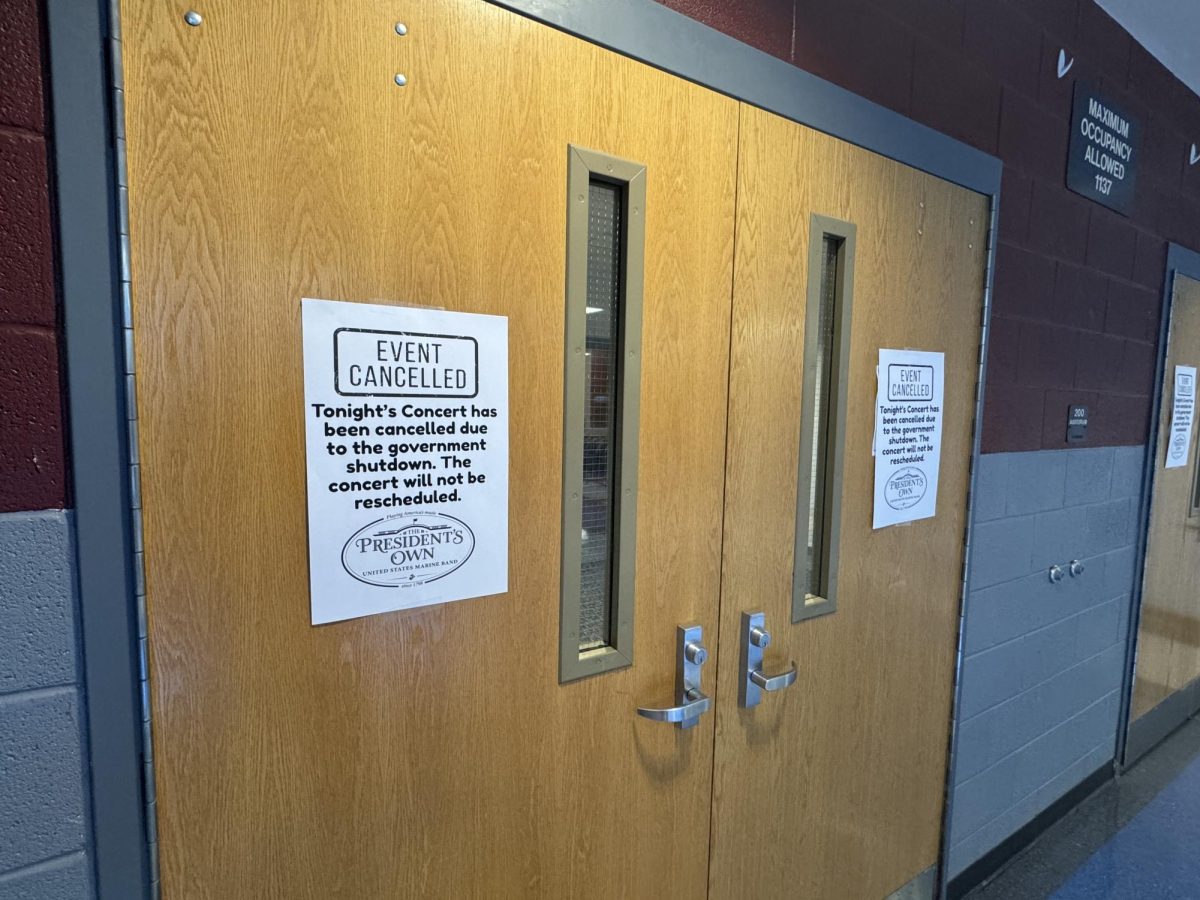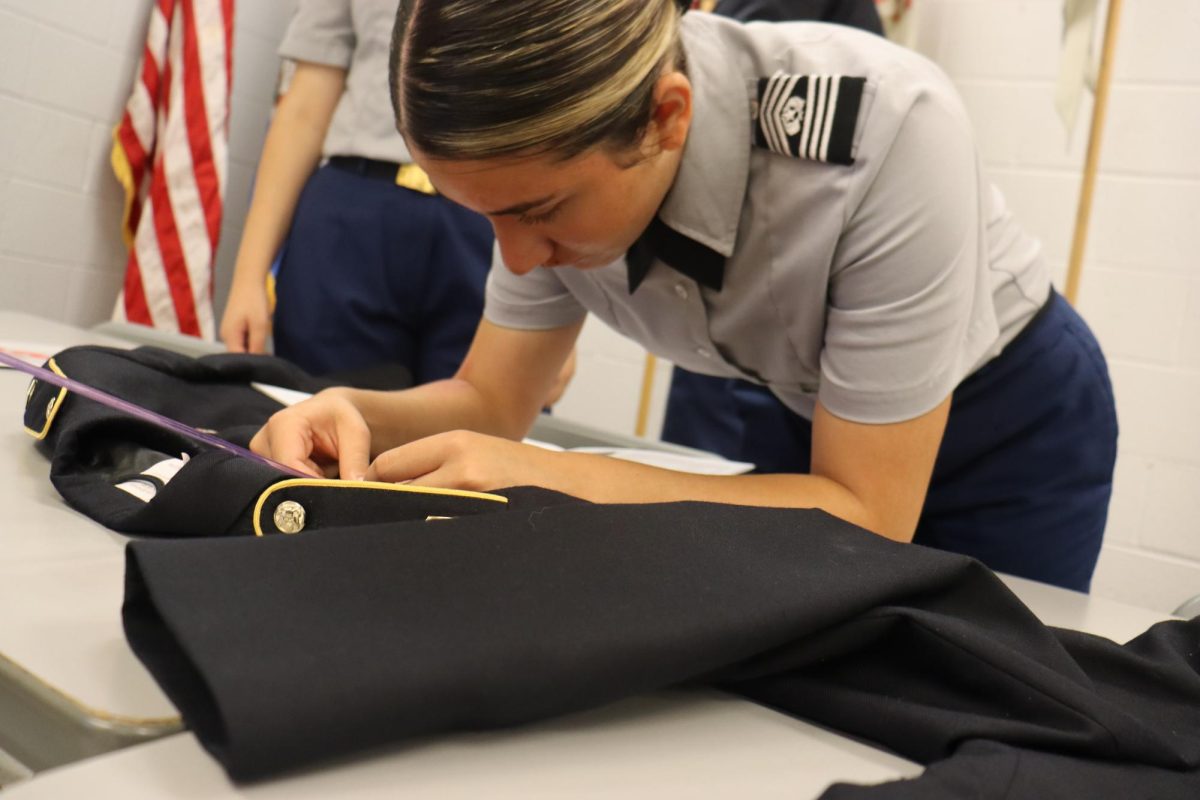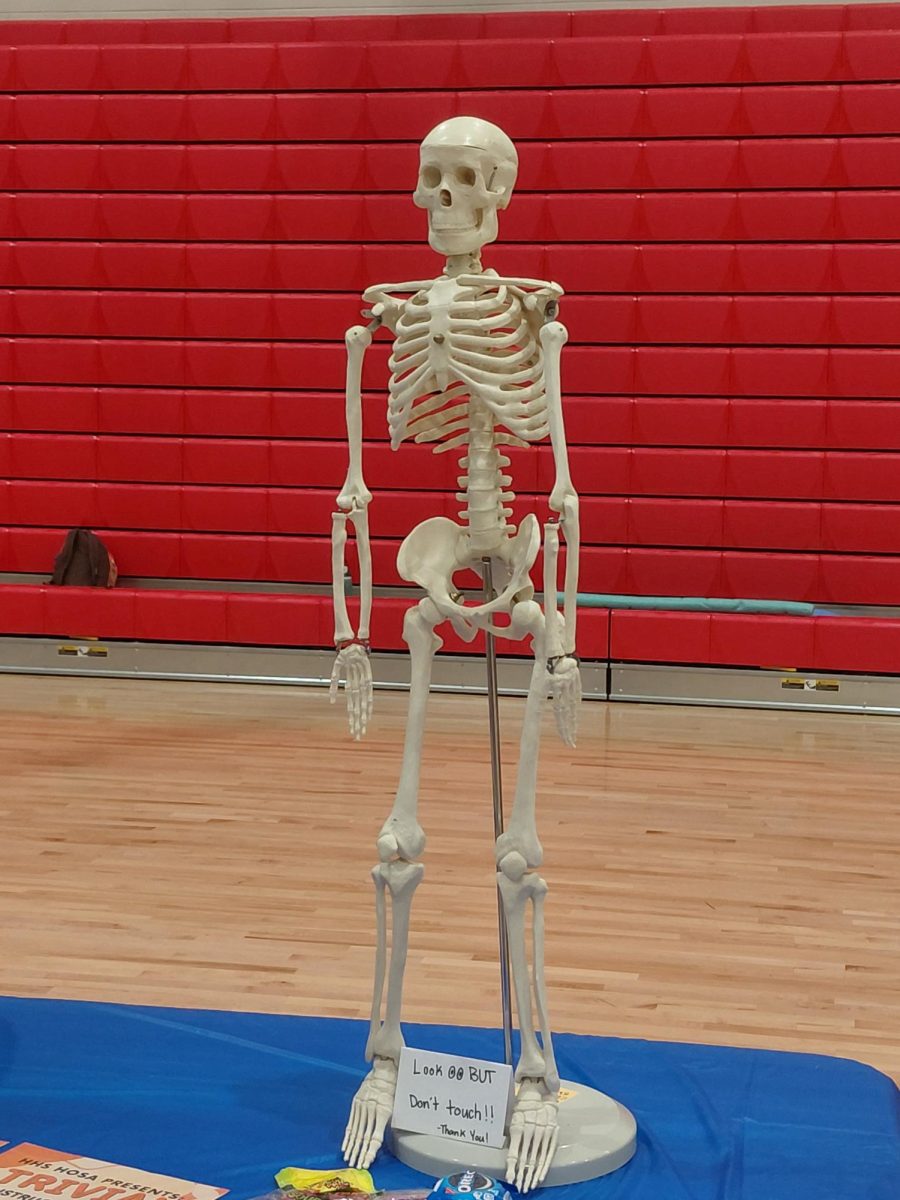“There is no way to guarantee anyone that it won’t be this school. There’s just no way and you live with it everyday. Everytime a school shooting happens, it literally makes the hairs stand up on my neck and my arms. Every single time [I worry about], ‘Could this have been prevented?’, ‘What did someone miss?’ But sometimes there is nothing that is missed and knowing that we can’t 100% guarantee the safety of our students every single day, you can’t overlook it,” HHS Principal Dr. Melissa Hensley said.
According to Education Week, there have been 174 school shootings since 2018, and already 30 this year that resulted in an injury or death. An incident in Denver, Sept. 16, marked the 500th mass shooting in the U.S. in 2023, according to The Hill.
“Gun violence in America, across the nation, is exactly like an epidemic,” Hensley said.
May 22, 2023, a lockdown took place at Harrisonburg High School that left many students, staff members and parents scared and confused. The school was put in a hard lockdown, lights off, phones silent, all doors locked. Though the incident was resolved and left no one physically injured, Superintendent Dr. Michael Richards noted that the incident lead the school system to critically think about their protocols, going as far as to call it “a botched lockdown.”
“We had a lockdown in the spring that failed in many ways. It was not good. Kids were locked out too long. Parents didn’t know enough about what was going on. We realized that when the police are active, doing their thing, they really want the way clear, they want everything cleared out of the way so the easiest way for them to do their work is the red line. But we realized that when you go to the red for a prolonged period of time, you can traumatize people. We have created a system that not only balances that, but also communicates well what’s going on. So when we go into one of these, we immediately communicate with students, staff and parents,” Richards said.
Harrisonburg City Public Schools (HCPS) have a new school division wide colored coded system. Every teacher is required to wear the information on a lanyard around their neck which details what to do in Code Red, Code Orange, Code Yellow and Code Green situations.
“This color coded system is new the way that we’re communicating it. There was always a protocol that was consistent, but I think this tightened it up and made it very clear, it’s also something to get shared with parents,” Hensley said.
This new lockdown protocol was shared with teachers and staff at safety protocol sessions where they go over drills, which includes lockdowns. Hensley stressed the importance of leading her staff through the ‘Why’ of protocols and how to look for warning signs.
“Every year we talk about the protocols. We talk about examples of things that maybe have happened over time in different schools and then relate that back to the why of our protocols,” Hensley said. “We’re looking for students who show aggressiveness, talk of violence or writings that may indicate that there’s an inclination towards violence. Things that they may be saying or actions they may take towards peers that are inappropriate, aggressive, fascination with school shootings and weapons, information that we feel falls into a pattern.”
In addition to getting the teachers up to speed, the school division has devised a strategy for helping students through the anxieties that the lockdown left and any future issues that may arise.
“It’s the afterwards effect, that I think we need to probably focus a little bit more. on How people felt about that incident. And what types of emotions, anxieties, questions and things like that, that people have, including students, staff and administrators as well,” Hensley said. ”The school district did give us talking points sheets, so that we are doing a better job of working with students and staff after the incident, because I think there’s a lot of anxiety and a lot of questions from a lot of people about what’s going on in my school right now. We’ve tried to clean up how we’re communicating with students and staff during the incident, and then debriefing after the incident, to help students and staff process what’s happened.”
Hensley recommends seeking additional help from a counselor if needed. Though students also may feel safer with some of the additional security measures put into place this year. Hallway cameras were upgraded to create clearer images, so all persons in the camera are fully identifiable, key cards are being placed on the doors for teachers to avoid any worry of stolen or lost keys and AI detectors will be placed in doors by the end of this year.
Richards feels this is an important step in calming some of the student’s anxieties.
“I feel that it’s my number one responsibility to keep students safe. That’s my number one. Even before teaching them algebra and expository writing, I need to keep you safe. As a father I have that thought in the back of my head all the time, but I see all of the HCPS students as somewhat my own, so I feel very protective over them,” Richards said.
Richards believes the first step in protecting kids is making them feel welcome. He has noted the three concentric circles that make up our school and community. The innermost circle being the school, the second circle being the campus and the third being the surrounding areas and communities.
“The innermost circle is mental health within the school. [This is improved through] community building, building camaraderie, [showing] people you care about each other [and making] people feel like they belong. Those relationships are huge and the mental health issues, being aware, not letting kids slip through the cracks. Making sure marginalized students are cared for,” Richards said.
Hensley believes the most important thing a student can do is follow the “See something, say something” policy.
“The one thing we do know about school shooters is often somebody knew or somebody saw something and they didn’t report it. Students should never feel bad about reporting anything, it will be kept confidential, we’ll look into it and take it very seriously,” Hensley said. “‘See Something, Say Something.’ It’s never ‘I don’t think that it’s something’ if it makes you uneasy, it’s something that really should be reported.”
“We definitely learn from past mistakes, and have now put some things in place. I think that will help everybody,” Hensley said.
Richards, Hensley and the entire school system has been trained to be hyper vigilant and cognizant of their surroundings. Even the Harrisonburg Police Department has gotten involved with training to help ensure the safety of students if an incident were to occur.
“We definitely learn from past mistakes, and have now put some things in place. I think that will help everybody,” Hensley said.
*Originally published Sept. 29, 2023 over print



